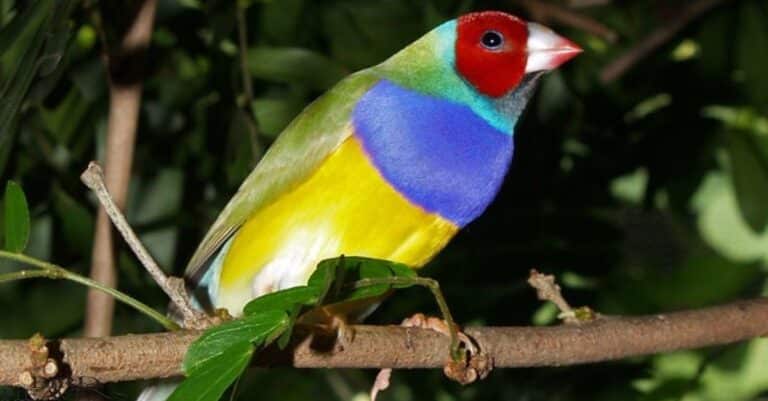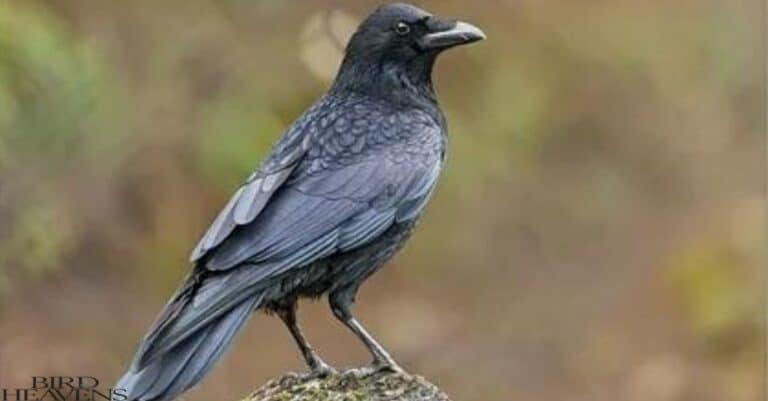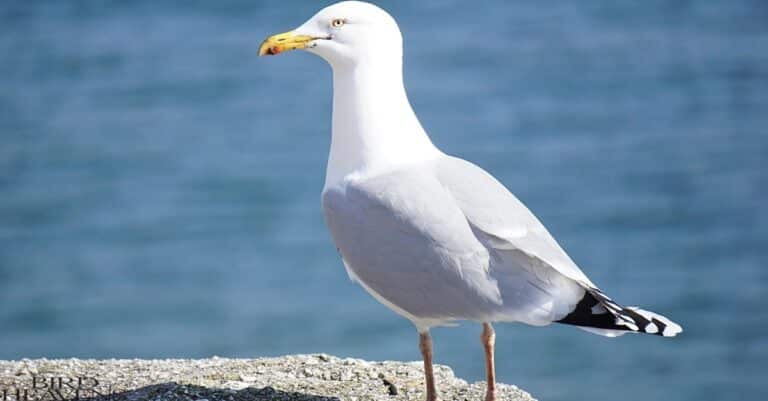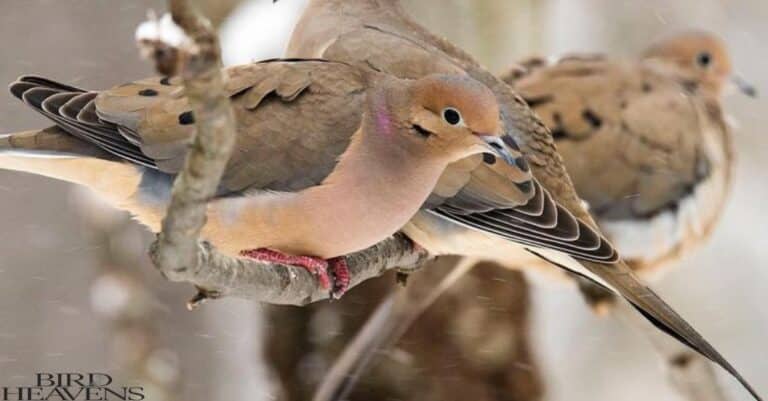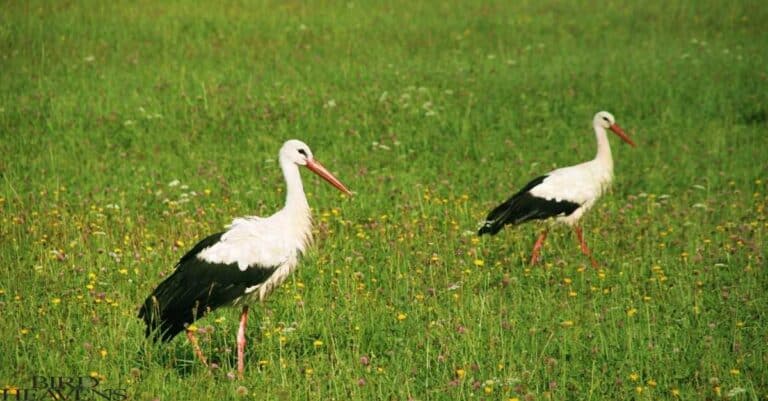Starling Vs Grackle – How To Tell These Menaces Apart
Starlings and grackles are often confused, but they’re distinct birds. Starlings are smaller, invasive, and known for their seasonal plumage changes and massive murmurations.
Grackles are larger, native to the Americas, and recognized for their intelligence and iridescent feathers. Both can be urban nuisances, but grackles have longer tails and yellow eyes. Starlings are excellent mimics, while grackles have harsher calls.
What is a Starling?

A starling is a small to medium-sized bird belonging to the Sturnidae family, which includes over 100 species.
Although they may resemble blackbirds, starlings are distinct, often recognizable by their glossy or iridescent feathers, especially the European Starling, which has black feathers with green and purple sheens in the summer and a speckled look in the winter.
They also have short tails, triangular wings, and heavy bills, with the color of the beak changing by season (yellow during breeding and dark otherwise).
Starlings are known for their adaptability and have become one of the most successful but problematic bird species due to their widespread invasion.
Physical Characteristics
Starlings are small to medium-sized birds, known for their distinctive appearance:
- Size: 7.9-9.1 inches long
- Wingspan: 12-16 inches
- Weight: 2-3.6 ounces
Starlings have:
- Short, squared tails
- Triangular wings in flight
- Long, pointed yellow beaks (breeding season)
- Dark beaks (non-breeding season)
Vocal Abilities and Mimicry
One of the starling’s most impressive features is its vocal repertoire. These birds are exceptional mimics, capable of imitating a wide range of sounds:
- Other bird calls
- Human speech
- Car alarms
- Cell phone ringtones
What is a Grackle?
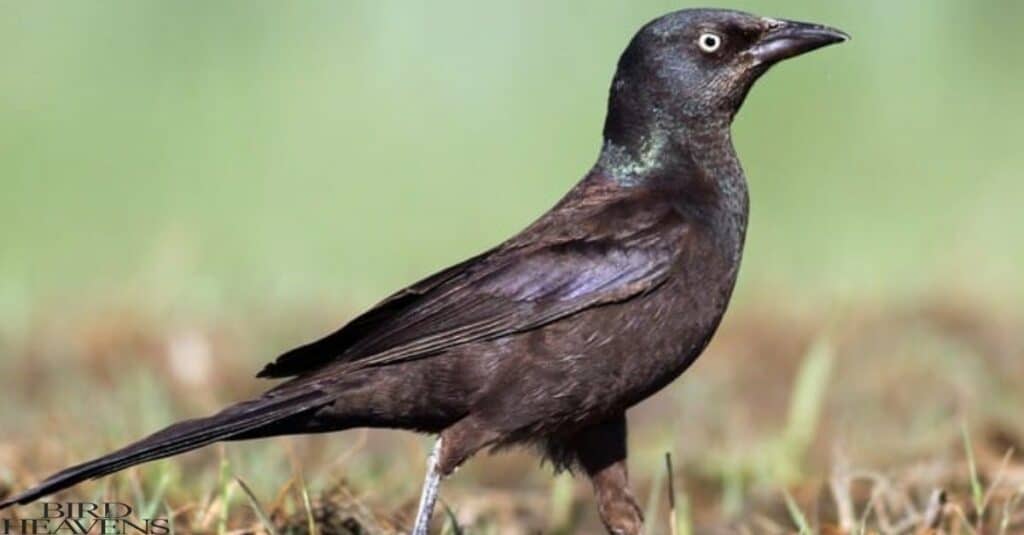
Grackles are birds that may resemble starlings at first glance, but telling them apart is easy once you know the key differences. There are currently 10 species of birds with “grackle” in their name, all of which belong to the blackbird family.
Unlike the starling, grackles are native to the Americas. They belong to the family Icteridae, which includes other blackbirds, orioles, and meadowlarks. Grackles have been part of the North American landscape for thousands of years, evolving alongside other native species.
In the past, there was an 11th species known as the Slender-billed Grackle, closely related to the Great-tailed Grackle. However, the Slender-billed Grackle is now extinct.
Common Species
There are several species of grackles, but the most common ones you’re likely to encounter are:
- Common Grackle (Quiscalus quiscula)
- Range: Eastern and central North America
- Size: 11-13 inches long
- Great-tailed Grackle (Quiscalus mexicanus)
- Range: Southwestern U.S. to Peru
- Size: 15-18 inches long
- Boat-tailed Grackle (Quiscalus major)
- Range: Southeastern coastal areas
- Size: 10-15 inches long
Distinctive Features
Grackles are known for their striking appearance:
- Long, keel-shaped tails
- Glossy, iridescent plumage
- Yellow eyes (in most species)
- Long, sturdy legs
- Strong, slightly curved beaks
Fun fact: Male grackles are typically larger and more colorful than females, a trait known as sexual dimorphism.
Starling vs Grackle Size :
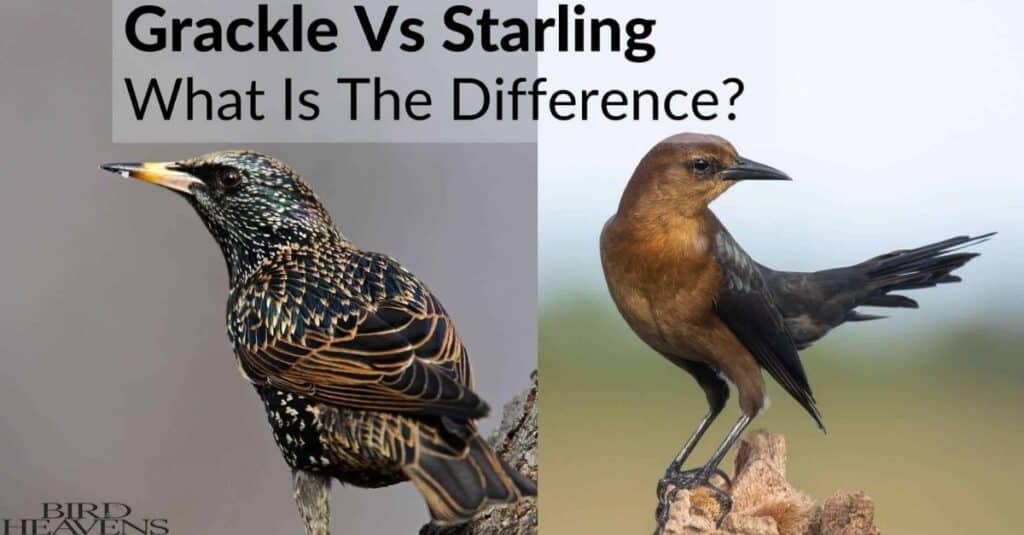
When it comes to size, there’s a noticeable difference between starlings and grackles. Let’s break it down:
Starling Measurements
Starlings are on the smaller side:
- Length: 7.9-9.1 inches
- Wingspan: 12-16 inches
- Weight: 2-3.6 ounces
Grackle Size Variations
Grackles, depending on the species, are generally larger:
| Species | Length | Wingspan | Weight |
| Common Grackle | 11-13 inches | 14-18 inches | 2.6-5 ounces |
| Great-tailed Grackle | 15-18 inches | 18-23 inches | 3.8-6.7 ounces |
| Boat-tailed Grackle | 10-15 inches | 15-20 inches | 3.3-8.4 ounces |
How Size Affects Their Impact on the Environment
The size difference between starlings and grackles plays a significant role in their ecological impact:
- Starlings: Their smaller size allows them to access a wider variety of nesting sites, including small cavities in buildings and trees. This versatility contributes to their rapid population growth and spread.
- Grackles: Their larger size and longer beaks enable them to consume a wider range of food items, including larger insects and small vertebrates. This can have a more significant impact on local ecosystems.
Size matters in the bird world, explains Dr. James Croft, an ecologist specializing in invasive species. “The starling’s compact size makes it an adaptable generalist, while the grackle’s larger frame allows it to dominate certain niches in its native habitats.
You Might Like >>Where Do Mourning Doves Nest
Plumage and Appearance of Starling And Grackle :

Starling’s Speckled Shimmer
Starlings are famous for their ever-changing plumage:
- Breeding season: Glossy black with a purple and green iridescence
- Non-breeding season: Dark with white speckles (like stars in the night sky)
- Juveniles: Dull brown
Their feathers are short and pointed, giving them a sleek, streamlined appearance.
Grackle’s Iridescent Sheen
Grackles boast a more consistent, yet equally stunning plumage:
- Males: Glossy black with an iridescent blue, purple, or bronze sheen (depending on the species)
- Females: Slightly duller, often with a brownish tinge
- Juveniles: Dark brown
Their long tail feathers and overall larger size give them a more imposing presence compared to starlings.
Seasonal Changes in Both Species
While both species undergo some seasonal changes, starlings are the true masters of transformation:
Starling seasonal changes:
- Spring: Glossy black with yellow beak
- Summer: Slight fading of glossiness
- Fall: White speckles appear
- Winter: Full speckled plumage, dark beak
Grackle seasonal changes:
- Less dramatic than starlings
- Slight increase in iridescence during breeding season
- Feathers may appear more worn by late summer
Behavioral Differences of Starling And Grackle :
Starling’s Murmurations and Social Structure
One of the most spectacular sights in the bird world is a starling murmuration – a massive, swirling flock that can contain thousands of birds. This behavior serves several purposes:
- Protection from predators
- Information exchange about feeding sites
- Warmth during cold nights
Starlings are highly social birds, often forming large roosting colonies in urban areas.
Grackle’s Intelligence and Problem-Solving Skills
While grackles also form flocks, they’re known more for their intelligence and adaptability:
- Tool use: Grackles have been observed using bread as bait to catch fish
- Learning: They quickly figure out how to access new food sources
- Memory: Grackles can remember human faces and adjust their behavior accordingly
“In cognitive tests, grackles often perform on par with some corvids, which are considered among the smartest birds,” notes Dr. Lisa Sanchez, a researcher studying avian cognition.
Interactions with Humans and Other Birds
Both starlings and grackles have a reputation for being nuisance birds, but their interactions differ:
Starlings:
- Aggressive nest-site competitors, often evicting native birds
- Form large, noisy roosts in urban areas
- Can cause significant crop damage
Grackles:
- More individually assertive at bird feeders
- Known to raid other birds’ nests for eggs and nestlings
- Often seen in urban parks and parking lots, scavenging for food
You Might Like >> Birds with Mohawks
Diet Habits of Starling And Grackle :
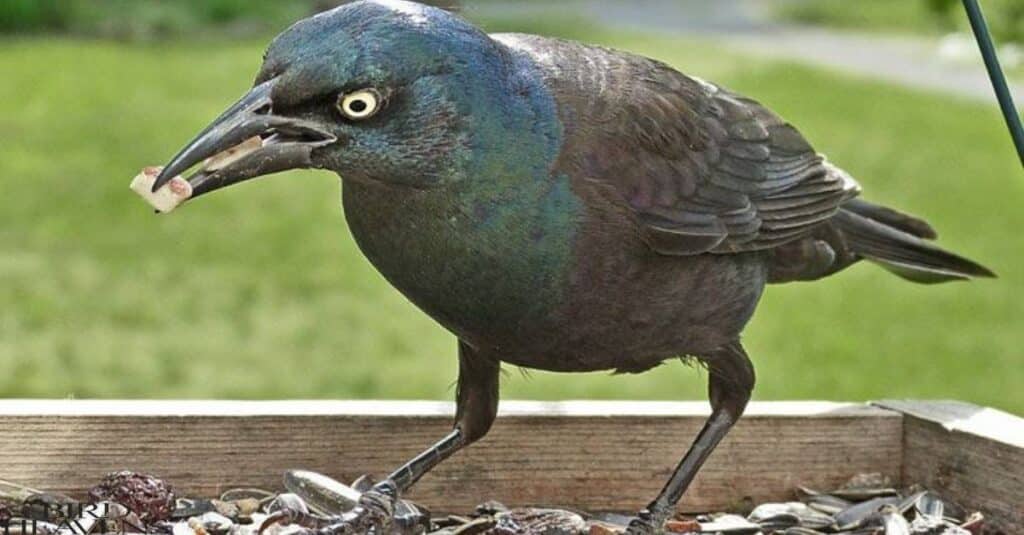
Starling’s Varied Diet and Foraging Techniques
Starlings are opportunistic omnivores with a diverse diet:
- Insects and other invertebrates
- Fruits and berries
- Seeds and grains
- Human food scraps
They forage in large groups, often probing the ground with their beaks to find hidden insects.
Grackle’s Omnivorous Appetite
Grackles have a similar omnivorous diet but tend to consume more animal matter:
- Insects, including large grasshoppers and beetles
- Small fish, lizards, and rodents
- Eggs and nestlings of other birds
- Grains and fruits
Grackles are known for their “anting” behavior, where they rub ants on their feathers, possibly to deter parasites.
Agricultural Impact of Both Species
Both starlings and grackles can cause significant agricultural damage:
Starling impact:
- Consume large quantities of grain crops
- Contaminate livestock feed
- Estimated annual damage in the U.S.: $800 million
Grackle impact:
- Target ripening fruits and vegetables
- Damage to corn crops can be severe
- Annual damage estimates vary by region
Nesting and Breeding of Starling And Grackle :
Starling’s Aggressive Nesting Behavior
Starlings are cavity nesters, which puts them in direct competition with native species:
- Prefer holes in trees, buildings, or nest boxes
- Often evict other birds from their nests
- Both parents participate in nest building and chick rearing
- Typically lay 4-6 eggs per clutch
- Can have 2-3 broods per year
Grackle’s Colonial Breeding Habits
Grackles exhibit more variation in their nesting behavior:
- Common Grackles often nest in loose colonies
- Great-tailed Grackles may form large breeding colonies
- Nests are typically built in trees or shrubs
- Females construct the nests and do most of the incubation
- Usually lay 3-5 eggs per clutch
- Generally have 1-2 broods per year
Competition for Nesting Sites
The competition between starlings, grackles, and other native species for nesting sites is intense:
- Starlings often outcompete native cavity-nesters like bluebirds and woodpeckers
- Grackles may face competition from other blackbirds and jays
- Human-provided nest boxes can alleviate some pressure but may also attract more starlings
You Might Like >>Where Do Seagulls Sleep
Habitat and Distribution of Starling And Grackle :
Starling’s Adaptability to Urban Environments
Starlings are incredibly adaptable and thrive in human-modified landscapes:
- Cities and suburbs
- Agricultural areas
- Parks and gardens
- Woodland edges
Their range now covers most of North America, from southern Alaska to northern Mexico.
Grackle’s Preference for Specific Ecosystems
While also adaptable, grackles show more specific habitat preferences:
- Common Grackles: Open woodlands, farmlands, and suburban areas
- Great-tailed Grackles: Open and semi-open areas, often near water
- Boat-tailed Grackles: Coastal marshes and beaches
Range Overlap and Expansion
The ranges of starlings and grackles overlap significantly in many parts of North America:
- Starlings continue to expand their range, particularly northward
- Great-tailed Grackles have been expanding their range northward and eastward
- This overlap can lead to increased competition for resources
You Might Like >>Owls In Georgia
Identification Tips for Birdwatchers :
Key Visual Cues
When trying to distinguish between starlings and grackles, look for these key features:
Starlings:
- Shorter, chunkier body
- Short, square tail
- Triangular wings in flight
- Speckled plumage in winter
Grackles:
- Longer, sleeker body
- Long, keel-shaped tail
- Yellow eyes (in most species)
- Iridescent plumage year-round
Behavioral Tells
Observing behavior can also help with identification:
Starlings:
- Often seen in large, tight flocks
- Quick, waddling walk on the ground
- Frenzied feeding behavior
Grackles:
- More likely to be seen individually or in smaller groups
- Strutting walk with tail often held at an angle
- More deliberate feeding behavior
Vocalizations and Calls
Both species are vocal, but their sounds differ:
Starlings:
- Varied repertoire including whistles, warbles, and rattles
- Excellent mimics of other birds and environmental sounds
Grackles:
- Harsh, creaky calls often described as sounding like a rusty gate
- Common Grackles make a distinctive “readle-eak” call
You Might Like >>Do Crows Mate for Life
Conclusion:
Starlings and grackles may look alike, but they are different in several ways. Grackles are larger with longer tails, while starlings change their plumage with the seasons.
Starlings form large flocks and are invasive to North America, whereas grackles are native to the Americas and often display more individual intelligence. Both species play vital ecological roles starlings help control insects, and grackles maintain the balance in their habitats.
Bird enthusiasts can support these birds by providing nesting sites, using bird-friendly landscaping, and participating in bird counts. Recognizing the differences between them enriches our understanding of bird diversity and their impact on ecosystems.
FAQs :
- Q: What’s the main difference in appearance between starlings and grackles? A: Starlings are smaller with short, square tails and speckled winter plumage. Grackles are larger with long, keel-shaped tails and consistent iridescent feathers year-round.
- Q: Are both starlings and grackles native to North America? A: No. Starlings are invasive, introduced in 1890, while grackles are native to the Americas.
- Q: How do the vocal abilities of starlings and grackles differ? A: Starlings are excellent mimics with a varied repertoire. Grackles have harsher calls, often described as sounding like a rusty gate.
- Q: Which species is known for forming massive, swirling flocks? A: Starlings are famous for their large, swirling flocks called murmurations.
- Q: How do starlings and grackles impact agriculture? A: Both cause crop damage. Starlings consume grain and contaminate livestock feed, while grackles target ripening fruits and vegetables, especially corn.

Andrew Paul is a renowned ornithologist and founder of Bird Heavens. With my extensive expertise in bird behavior and habitat preservation,I will insightful content on species identification and conservation.My Future plans include interactive workshops and online courses to foster a global community of bird enthusiasts committed to conservation and appreciating avian life. Join me at Bird Heavens



